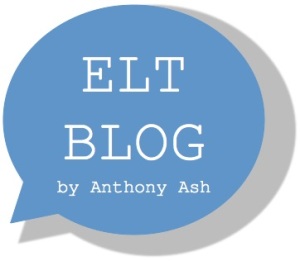In a previous post I spoke about the importance of Positive Reinforcement in the language classroom. It’s important that teachers show learners what language they are using correctly and praise them for it.
My justification for this is because we as teachers know what language is correct and incorrect, but that doesn’t mean learners know. In fact, as long as they have executed a successful communicative act, then they have achieved the desired goal: they’ve communicated a message.
Language is a wide topic and showing examples of good language use could range from grammar through lexis to pronunciation. Today, I’d like to focus only on vocabulary.
Listen in and take note
I’ve been in many classrooms where I’ve seen teachers walk around and give off the impression that they are monitoring. But when you ask them what they were doing, they have nothing to say. They walk around the room but they’re not actually listening in to what their students are saying or doing.
Make sure you have a piece of paper and a pen with you. As you walk round, actually listen to your learners. Get near them, sit next to them if need be, but try not to be intrusive. Listen to them and start making notes.
These notes are a valuable insight into the language your learners are producing. You could centre entire lessons around a few lines of notes, as there’s so much which can be extrapolated from them.
Note the good and the bad
English language teachers have a penchant for noting down only incorrect language. This probably stems from basic training on pre-service courses, such as CELTA, where trainees are encouraged to collect language samples for Delayed Error Correction.
But what learners produce is more than just mistakes. They produce lots of good language. Using the right word in the right context can be a remarkable task in English.
Imagine your students are preparing for a speaking exam and have to describe some images in front of them. One of the images is of a big, old, dusty book – the sort that would have been bound 300 years ago and left to age in an old cloister.
Now imagine you hear one of your B2 level student say it’s a hefty tome instead of it’s a big book – that is an incredible example of very accurate lexis. It’s definitely worth noting down as a good example of good vocabulary.
And now imagine you hear another student say it’s a large volume – perhaps this isn’t as impressive as the example above, but it’s still correct. At B2 level, the students will know it’s an old book is correct, but they might be unsure of whether describing the image as a volume, dated or antiquated might be correct or not. It’s the teacher’s job to show them that these are indeed good usages of lexis.
Get it on the whiteboard
I’ve also seen many lessons where teachers have taken lots of notes and then used half of what’s on their notes. This a complete waste. You need to make use of what you’ve got in front of you – there’s plenty of language to look at, both good and bad.
Get the vocabulary that you’ve noted down up on the board. You could do this while your students are still completing their task or working on another task.
Once the vocabulary is up on the board, what should you do with it? Well, you’ve got a couple of options:
- Ask your students to decide which are correct and which are incorrect
- Simply put a tick or a cross next to each one so they know which are correct and incorrect
- Use the good and bad examples as a springboard to find synonyms and related lexical items
- Get your students to build sentences containing these words
Point 4 above is particularly revealing, because understanding a word is only half the battle: knowing how to use it contextually and grammatically correctly in a sentence is the other half of the battle.
In fact, there are many things you can do with the vocabulary you hear your students using in the classroom, but the most important thing is that you take note of it and show examples of both good and bad language.

Thanks for the post. it is quite an important topic to circulate and monitor our students attentively while working. I usually monitor my students and write as little as I could but I am inclined to believe the more we jot down and discuss as a whole class the better.
LikeLike
I dunno about whether you can use everything you note down in a lesson. Sometimes you have other priorities. Still, you are right: give feedback on the vocabulary used regarding how it suits the register and domain. As an added point, get learners to note down vocabulary and review it.
LikeLiked by 1 person